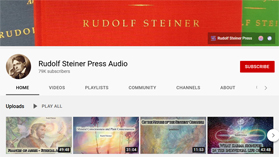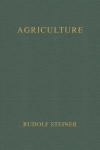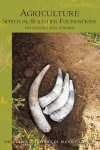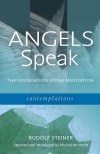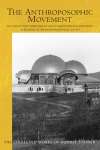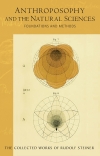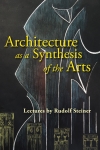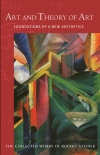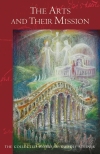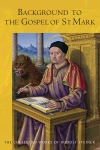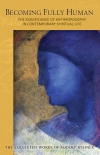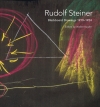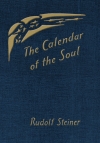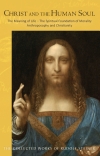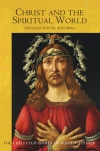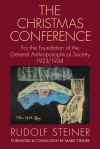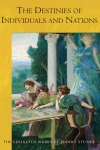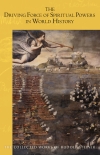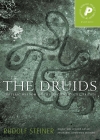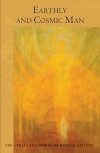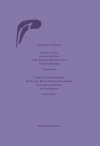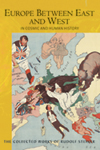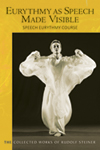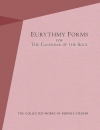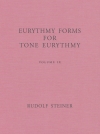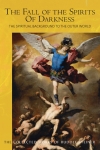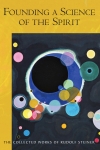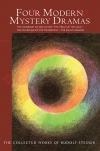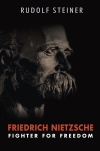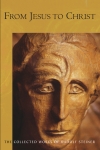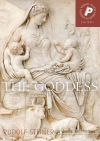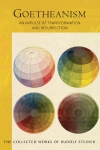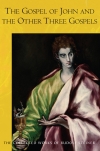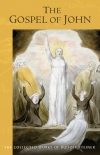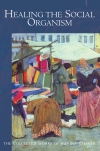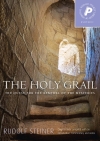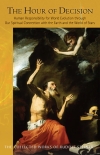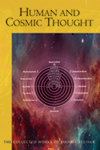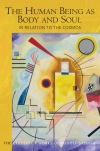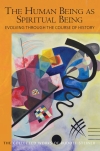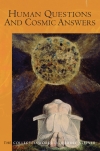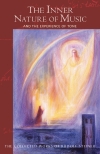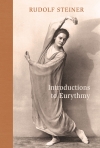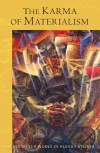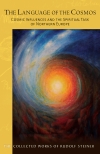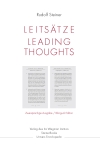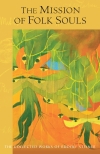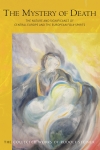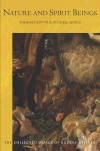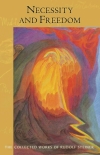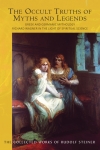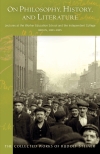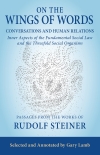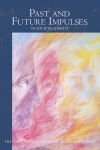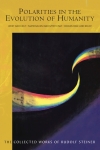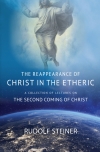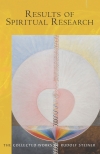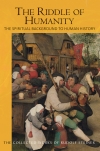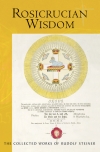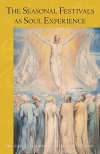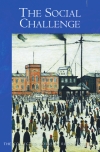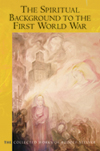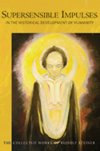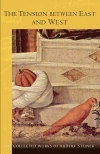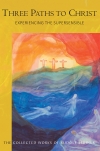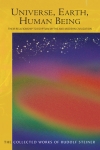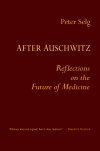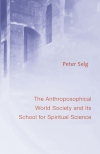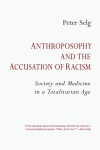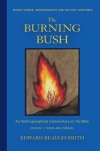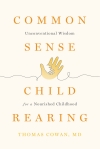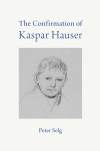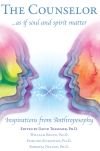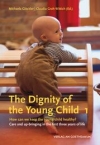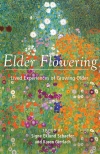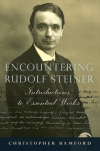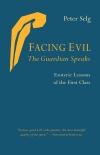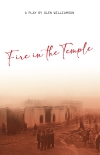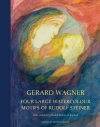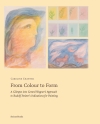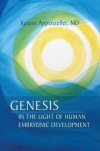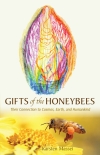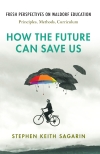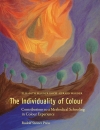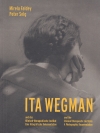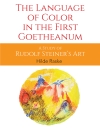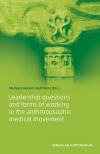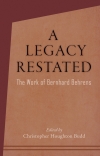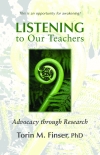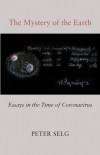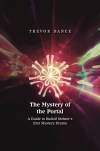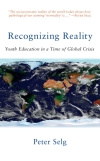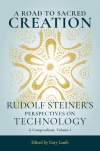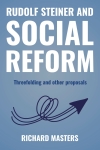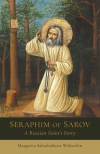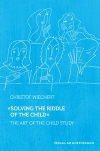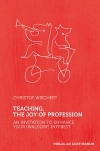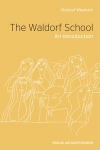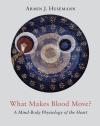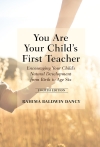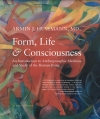
- RUDOLF STEINER
- OTHER AUTHORS
-
NEW AND FORTHCOMING BOOKSRUDOLF STEINER
AGRICULTURE - SPIRITUAL FOUNDATIONS FOR THE RENEWAL OF AGRICULTURE
8 lectures and 4 discussions, Koberwitz, June 7–20, 1924
AGRICULTURE, SPIRITUAL-SCIENTIFIC FOUNDATIONS
for Agricultural Renewal
One hundred years after Rudolf Steiner presented his lectures on agriculture in 1924, the impact of his words are self-evident. Around the world, biodynamic principles are practised in thousands of thriving farms, vineyards and gardens, and Demeter certification for biodynamic produce is recognized internationally as a mark of quality.
The Evolution of the Mysteries
The wisdom contained in this book is not derived via the usual methods of scholarly and historical research, and neither is it based on theory or speculation. Rudolf Steiner acquired his original contribution to human knowledge from metaphysical dimensions of reality which are hidden to most people – but visible to anybody who is prepared to develop spiritual means of perception.
ANGELS SPEAK THE FOUNDATION STONE MEDITATION
A year after the burning of the first Goetheanum, during the eight days of the Christmas Conference 1923/24, Rudolf Steiner, together with the 800 people present, laid the Foundation Stone “in our hearts” as a meditation. Every day at ten o’clock in the morning, and on the last day also in the evening—nine times in total—he spoke the verses, invoking the angelic hierarchies, allowing their voices to sound for us in the spirit. The Foundation Stone is thus a purely spiritual text, not intended as information, but as meditation.
The History and Conditions of the Anthroposophical Movement in Relation to the Anthroposophical Society
An Encouragement for Self-Examination
This course of lectures was given at a pivotal point in the development of the anthroposophic movement. Just months before, an act of arson had caused the destruction of the first Goetheanum, and its darkened ruins appeared to reflect the fragmentations within the Anthroposophical Society. Divisions were appearing amongst members and friends, with individual energies increasingly routed to external initiatives and practical projects. It became apparent that a new impetus was needed.
ANTHROPOSOPHY AND THE NATURAL SCIENCES
Foundations and Methods
This previously untranslated volume in The Collected Works of Rudolf Steiner showcases Rudolf Steiner presenting the key concepts and methods of spiritual science to more or less skeptical academic audiences in the early 1920s, answering such questions as:
What are the tools and instruments required to orient oneself in the world of the soul and the spirit?
How can we know that the spiritual world is an objective world and not merely a psychic projection?
What authorizes the spiritual researcher to acknowledge what he has experienced “on the other side” as a reality that is independent of him?ARCHITECTURE AS A SYNTHESIS OF THE ARTS
This unique collection of lectures introduces Rudolf Steiner’s vision of architecture as a culmination of the arts, uniting sculpture, painting and engraving as well as drama, music and dance – a vital synthesis with the goal of awakening human beings to their task in life.
Introduction by Zvi Szir
“The challenge of saying something about art was personal for Rudolf Steiner. He experienced it as deeply connected with his biography. It is not for nothing that, in the last lecture of this volume, he points to his repeated attempts to develop a new approach and new forms of expression for speaking about art. We find at least three forms of this attempted approach in this book.” —Zvi Szir (from the introduction)
8 lectures, Oslo and Dornach, May 18 – June 9, 1923 (CW 276)
BACKGROUND TO THE GOSPEL OF ST MARK
‘Christianity was bound at first to be a matter of faith and is only now beginning, very gradually, to be a matter of knowledge.’ – Rudolf Steiner
The Significance of Anthroposophy in Contemporary Spiritual Life
“There is no contradiction, if you look into the matter correctly, between destiny and freedom. However, in order to be able to present the concept of destiny to the world later on, it was first necessary that the concept of freedom be presented in the book The Philosophy of Freedom.” — Rudolf Steiner
BLACKBOARD DRAWINGS, 1919–1924
Edited by Walter Kugler
‘Did Rudolf Steiner dream these things? Did he dream them as they once occurred, at the beginning of all time? They are, for sure, far more astonishing than the demiurges and serpents and bulls found in other cosmogonies.’ – Jorge Luis Borges
“You will find meditative verses for the individual weeks of the year. You should take these meditations quite particularly into your hearts, for they contain what can make the soul alive and what really corresponds to a living relationship of the soul forces to the forces of the macrocosm.” — Rudolf Steiner
“Spiritual science does not want to replace Christianity; rather, it aims to be the instrument through which the meaning of Christianity can be grasped. And one thing that will become particularly clear through spiritual science is that the being whom we call Christ must be recognized as the center of life on earth, and that what we call the Christian faith is the ultimate religion, the eternal religion for the future of the earth.” — Rudolf Steiner (July 13, 1914)
CHRIST AND THE SPIRITUAL WORLD
The Quest for the Holy Grail
Reassessing human history in relation to the cosmic-earthly events of Christ’s incarnation, Rudolf Steiner stresses the significance of both Gnostic spirituality and the legends of the Holy Grail. The ‘Christ-Impulse’, he tells us, is not a one-time event but a continuous process, beginning well before Jesus of Nazareth walked the earth. This mighty impulse is a force that gives impetus to human development, such as with the extraordinary blossoming of free thinking of the last two millennia. Surveying this pattern of evolving human thought, Steiner explains the roles of contrasting historical figures, for example the great teacher Zarathustra, Joan of Arc and Johannes Keplar. We are shown the widespread influence of the clairvoyant prophetesses, the sibyls, who formed a backdrop to the Greco-Roman world. Steiner contrasts their revelations to those of the Hebrew prophets.
The Mystery, Teaching and Mission of a Master
The wisdom contained in this book is not derived via the usual methods of scholarly and historical research, and neither is it based on theory or speculation. Rudolf Steiner acquired his original contribution to human knowledge from metaphysical dimensions of reality which are hidden to most people – but visible to anybody who is prepared to develop spiritual means of perception.
For the Foundation of the General Anthroposophical Society 1923/1924
The laying of the Foundation Stone, lectures and addresses, discussion of the Statutes, Dornach, Dec. 24, 1923 – Jan. 1, 1924 (CW 260)
THE DESTINIES OF INDIVIDUALS AND NATIONS
Amid the darkness of World War I, Rudolf Steiner offered a profoundly spiritual response to the tragedy of global conflict. With compassion and clarity, each of these lectures begins with a reverent verse honouring the fallen, before unfolding a deeper perspective on the unseen forces shaping human destiny.
THE DRIVING FORCE OF SPIRITUAL POWERS IN WORLD HISTORY
7 lectures in Dornach, Switzerland, March 11–23, 1923
“Historical happenings on Earth can be understood in their reality only when we see them as reflections of what is being enacted in the supersensible, spiritual world between the beings of the higher hierarchies.” — Rudolf Steiner (March 17, 1923)
Esoteric Wisdom of the Ancient Celtic Priests
The wisdom contained in this book is not derived via the usual methods of scholarly and historical research, and neither is it based on theory or speculation. Rudolf Steiner acquired his original contribution to human knowledge from metaphysical dimensions of reality which are hidden to most people – but visible to anybody who is prepared to develop spiritual means of perception.
Nine lectures held in Berlin on October 23, 1911, and between March 19 and June 20, 1912 (CW 133)
ESOTERIC LESSONS FOR THE FIRST CLASS OF THE SCHOOL OF SPIRITUAL SCIENCE AT THE GOETHEANUM
Volumes One to Four
During the refounding of the Anthroposophical Society as the General Anthroposophical Society at Christmas 1923/24, Rudolf Steiner also reconstituted, as the School of Spiritual Science, the Esoteric School he had led in three classes from 1904 to 1914, at the same time extending its scope by adding artistic and scientific Sections. However, owing to his illness and later death in March 1925, he was only able to make a beginning by establishing the First Class and the Sections. The actual step from the Esoteric School to the School of Spiritual Science was nevertheless an exceptional one. The Esoteric School from Helena Blavatsky’s time had been secret. Its existence was known only to those personally invited to participate. In contrast, the existence of the School of Spiritual Science was stated openly in the public statutes of the General Anthroposophical Society. From the Christmas Conference onwards, Rudolf Steiner worked within this publicly acknowledged framework.
in Cosmic and Human History
In a broad-ranging series of lectures, Rudolf Steiner shines new light on the spiritual background to the outbreak of the Great War in Europe. Spiritual entities stand behind the various peoples of the world, he says. He describes how these beings – Folk Souls – relate to the cultural diversity of Europe, America and the East, and speaks of their individual tasks and destinies in relation to the deeper causes of the catastrophic war. Central Europe has the particular mission of mediating between the Western world, the Slavic countries and by extension the East. Steiner alleges that Western secret societies consciously suppressed the spiritual life of this central cultural region through malign activities. These same brotherhoods exploited H. P. Blavatsky’s occult faculties for their own ends.
EURYTHMY AS SPEECH MADE VISIBLE
Speech Eurythmy Course
With these fundamental lectures on speech eurythmy – given just months after his course entitled ‘Eurythmy as Visible Singing’ – Rudolf Steiner completed the foundations of the new art of movement. In connecting to the centuries-old esoteric and exoteric Western traditions of ‘the Word’ – the creative power in the sounds of the divine-human alphabet – he gave it concrete form and expression in the performing arts, education and therapy. Although aimed primarily at the professional concerns of eurythmists who perform, teach or work as therapists, the lectures offer a wealth of suggestions and insights to anyone interested in the arts.
EURYTHMY FORMS FOR THE CALENDAR OF THE SOUL
These eurythmy forms and indications (CW A 23/2), published here for the first time in English, were given by Rudolf Steiner for the weekly verses of The Calendar of the Soul. The wealth of forms and metamorphoses in the cycle of the year is study material for all students of eurythmy. The forms can also be stimulating for those who are not practicing eurythmists but are interested in deepening their relationship with the calendar’s verses and the cycle of the year.
EURYTHMY FORMS FOR TONE EURYTHMY
Volume IX
The art of movement called eurythmy began about eighty years ago, based on Rudolf Steiner’s knowledge of spiritual beings and meanings behind various human movements, as well as knowledge of the inner spiritual qualities of human beings when we move.
THE FALL OF THE SPIRITS OF DARKNESS
The Spiritual Background to the Outer World: Spiritual Beings and their Effects, Vol. 1
Speaking towards the end of the catastrophic Great War, Rudolf Steiner reveals the spiritual roots of the crises of our times. Since 1879, he says, human minds have been influenced by backward angels, ‘spirits of darkness’, who – following their defeat in battle with Archangel Michael – were forced out of the heavens and ‘fell’ to the earth. This war in the spiritual worlds had consequences, and it is essential that people today are sufficiently awake to the retrogressive influences around them. In a positive sense, we can choose freely to engage with the spirits of light, who seek to emancipate human beings from bonds of race, nation and blood.
FOUNDING A SCIENCE OF THE SPIRIT
‘Everyone can derive joy and hope from the communications of another, for what we are told about the higher worlds is not mere theory, unrelated to life. As its fruits, it brings us two things we must have if we are to lay hold of life in the right way – strength and security – and both are given in the highest measure.’ – Rudolf Steiner
The Doorway of Initiation – The Trial of the Soul – The Guardian of the Threshold – The Souls Awaken
The Doorway of Initiation – The Trial of the Soul – The Guardian of the Threshold – The Souls Awaken
Fighter for Freedom
Translated by Margaret Ingram deRis
Immediately upon reading Nietzsche’s Beyond Good and Evil in 1889, Rudolf Steiner recognized a kindred spirit—a courageous fighter for the freedom of the human individuality who waged a fierce but unconscious battle against the unspiritual views of the age.
Knowledge of the cosmic significance of Christ and his mission, once experienced intuitively, has faded over the centuries. As theologians and historians of the Church critically scrutinized the Gospel records, their focus shifted from a gnostic vision of Christ to the human figure of ‘the simple man’, Jesus of Nazareth.
From Natura to the Divine Sophia
The wisdom contained in this book is not derived via the usual methods of scholarly and historical research, and neither is it based on theory or speculation. Rudolf Steiner acquired his original contribution to human knowledge from metaphysical dimensions of reality which are hidden to most people – but visible to anybody who is prepared to develop spiritual means of perception.
An Impulse of Transformation and Resurrection
‘There will be a resurrection – a resurrection that should not be imagined politically… but it will be a resurrection. Goetheanism still rests in the grave as far as external culture is concerned. But Goetheanism must rise again.’
THE GOSPEL OF JOHN AND THE OTHER THREE GOSPELS
‘What is the Christ-event? It is a confluence of all preceding philosophies and religious streams of humanity… united in Palestine; and they were expressed in the Gospels according to the different types of initiation of the one or other Evangelist.’ – Rudolf Steiner
“It was Steiner’s intention in these lectures to establish the ways in which this Gospel and its author, Lazarus-John, the one Christ called the beloved disciple, provided one of the surest paths to an understanding of the profound relationship of Christ to each human person and to Earth.... He leads his audience, and us readers, to an understanding of Lazarus-John unknown even to the other three primary evangelists—Matthew, Mark, and Luke—who wrote their Gospels several decades before Lazarus-John.” — Robert McDermott (from the introduction)
Speaking just months after the end of the First World War, Rudolf Steiner urges his audience to awaken to the practical relevance of spiritual knowledge. Serious engagement with contemporary spiritual-scientific concepts can awaken healthy forces of the will, which in turn facilitate constructive action in the outer world. Conversely, ideas that are remnants of a previous age – echoed in empty phrases and dogmas – only hinder our ability to think with the consciousness demanded by the times, destroying the potential for true social initiative.
The Quest for the Renewal of the Mysteries
The wisdom contained in this book is not derived via the usual methods of scholarly and historical research, and neither is it based on theory or speculation. Rudolf Steiner acquired his original contribution to human knowledge from metaphysical dimensions of reality which are hidden to most people – but visible to anybody who is prepared to develop spiritual means of perception.
Human Responsibility for World Evolution through Our Spiritual Connection with the Earth and the World of the Stars
“These two things—knowledge of the human being and feeling for the entire cosmos—these are what give the human being equilibrium. But this he can find if, in the most modern sense, he can really grasp the Christ mystery, grasp it as anthroposophical spiritual knowledge can give it to him. For there we speak of Christ as a cosmic being that has descended to the earth from cosmic infinitude. We learn to feel cosmically, and need only imbue this cosmic feeling with content. This we can do only through anthroposophical spiritual science, otherwise the concept of Christ remains empty for us. The concept of Christ turns into mere phrase if we do not grasp the cosmos itself as human.”—Rudolf Steiner, Dornach, January 30, 1921
What convinces us of the truth of a point of view? Why do we find it difficult to understand or accept differing perspectives? What are the inner foundations of our knowledge?
THE HUMAN BEING AS BODY AND SOUL IN RELATION TO THE COSMOS
Human Evolution and the Soul and Spirit of the Universe, Part I
‘That is the ideal towards which Ahriman is striving: to destroy the individuality of human beings in order, with the power of human thinking, to transform the earth into a web of gigantic thought spiders – but real spiders. That is the ahrimanic goal from which we must escape by really imbuing ourselves with the spirit Word: “Not I, but the Christ in me”.’ – Rudolf Steiner
THE HUMAN BEING AS SPIRITUAL BEING EVOLVING THROUGH THE COURSE OF HISTORY
Human Evolution and the Soul and Spirit of the Universe. Part II
‘If we lived only in worlds of spirit, as we do between death and a new birth, we would never be able to acquire freedom there. It is something we can only achieve by our efforts within the physical world...’ – Rudolf Steiner
HUMAN QUESTIONS AND COSMIC ANSWERS
‘In the case of a solar eclipse, the evil that has spread over the earth can be carried out into the cosmos to wreak more havoc there, whereas in the case of a lunar eclipse, people who absolutely want to be possessed by evil thoughts can receive them from the cosmos.’
and the Experience of Tone
Introduction by Dorothea Mier
“A tone is at the foundation of everything in the physical world.”
An Extension of Goethe’s Morphological Thinking within the Realm of Human Movement
Introductions to eurythmy performances, 1913–1924 . This volume features introductory addresses given by Rudolf Steiner to the first audiences of the newly minted art of eurythmy. Before each eurythmy performance at which he was present, Steiner gave such an introduction. His intention, as he remarked on several occasions, was not to elucidate the meaning of eurythmy intellectually—a vain and inartistic endeavor—but rather to orient the audience to this new undertaking in the realm of art. Steiner took many approaches to this end, describing in his introductions a range of themes, from the origins of eurythmy as a Goethean art form to its role in pedagogy and therapy. As this volume gathers a large collection of these introductions, repetition is inevitable but not without value. A slight nuance of expression can awaken new insight.
“When faced with the way events are depicted in history, we should sense how necessary it is to rethink them. We should sense that today’s difficult time, which has brought such misery upon humanity, is the karmic effect of distorted, superficial thinking. We should sense that the painful experiences we are going through are in many respects the karma of materialism.” —Rudolf Steiner
Cosmic Influences and the Spiritual Task of Northern Europe
“Times have become serious; they have become so serious today that we must of necessity look upward from the narrowly defined events occurring within the limited horizon—which the majority of humanity prefers to recognize as the only legitimate one—to the cosmic expanses, also to the cosmic expanses of human soul-spiritual experiences. This is where we witness the cosmic turning point in time. If we become aware of this cosmic turning point in time, then we become aware that a cosmic New Year of the spirit must begin for humanity.”—Rudolf Steiner, New Year’s Eve lecture, 1921/22
Bilingual Edition (CW 26)
“Anthroposophy is a path of knowledge that would guide the spiritual in the human being to the spiritual in the universe.”
“It is particularly important . . . especially at the present time, to speak about the mission of the individual folk souls . . . because the destiny of humanity in the near future will bring people together in far greater measure than has hitherto been the case in order to fulfil a mission common to the whole of humanity. But the members of the individual peoples will only be able to offer their proper, free, and positive contributions if they have, above all else, an understanding of their own native origin, an understanding of what we might call the self-knowledge of their people, their folk.” —Rudolf Steiner
The Nature and Significance of Central Europe and the European Folk-Spirits
Speaking during the early stages of the First World War – with the Western Front just miles away and thousands of young men dying – Rudolf Steiner focuses on the subject of death. In particular, he addresses the difficult question of why some people die prematurely, particularly in youth. Steiner also speaks of the deaths of three of his acquaintances, having made contact with their living souls in the afterlife. He voices their own words and describes the first stages of their journeys after death.
Their Activity in our Visible World
‘Suppose you have seen an event, have formed an idea about it, and you say something that is not true – in other words, something that is a lie. Then what flows from the object is correct and what flows from you is false and this collision is a terrible explosion; and each time you do this, you attach a gruesome being to your karma which you cannot get rid of again until you have made good what you lied about.’ – Rudolf Steiner
Translated by Pauline Wehrle
Abounding in lively anecdotes and fresh insights, these lectures draw the reader into a rich contemplation on the nature of necessity and freedom in the world and in human life. A master of the art of the lecture, Rudolf Steiner brings together apparently disparate elements, resolving contradictions into a higher unity, showing us that far from being mutually exclusive, necessity and freedom are intimately interwoven in the intricate tapestry of life.
THE OCCULT TRUTHS OF MYTHS AND LEGENDS
Greek and Germanic Mythology
Richard Wagner in the Light of Spiritual Science
In this series of previously-untranslated lectures, Rudolf Steiner describes how myths and legends portray humanity’s most ancient evolutionary and spiritual history. Folklore presents ancient mystical wisdom in the form of stories – clothed in pictures by initiates – that enable individuals to understand their content in a more intellectual form at a later time.
OLD AND NEW METHODS OF INITIATION
Drama and Poetry in the Change of Consciousness in Modern Times
What are the key differences between the contemporary spiritual path and that of the ancient mysteries?
ON PHILOSOPHY, HISTORY, AND LITERATURE
Lectures at the Worker Education School and the Independent College, Berlin, 1901–1905
Steiner’s approach was at first a surprise for the students, who had been schooled in Marxist thought and tended to view all spiritual matters as ‘byproducts’ of material, economic processes. For them, it was questionable whether the spiritual striving of individual human beings could really be a driving force in history. Steiner knew the soul disposition of his students and the ‘inexpressibly tragic situation’ that the proletariat’s intense desire for knowledge had so far been ‘satisfied only through the grossest form of materialism.’ But the materialistic ideas that had been absorbed by the workers from popular scientific literature and from Marxist writings contained ‘partial truths.’ (introduction)
Conversations and Human Relations:
Inner Aspects of the Fundamental Social Law and The Threefold Social Organism
Selected and Annotated by Gary Lamb
“We live in [a time when] human beings must become independent. But on what does this depend? It depends on people’s ability...to become self-assertive, to not allow themselves to be put to sleep [in their thinking]. It is the antisocial forces that require development in this time, for consciousness to be present. It would not be possible for humanity in the present to accomplish its task if...these antisocial forces did not become ever more powerful; they are indeed the pillars on which personal independence rests. At present humanity has no idea how much more powerful antisocial impulses must become.” — Rudolf Steiner (Dec. 12, 1918)
in Societal Events
Barely four months after the end of the First World War, with Europe in chaos and exhausted from years of conflict, Rudolf Steiner offered these lectures of hope and renewal. Despite continuing social troubles around the world, he knew that human beings had an opportunity to organize society in a new way. Steiner responded to this prospect by giving suggestions for creating innovative social structures that are in harmony with people’s inner needs.
POLARITIES IN THE EVOLUTION OF HUMANITY
West and East – Materialism and Mysticism – Knowledge and Belief
‘The present age needs to understand that human beings must hold the balance between the two extremes, between the ahrimanic and the luciferic poles. People always tend to go in one direction... The Christ stands in the middle, holding the balance.’ – Rudolf Steiner
THE REAPPEARANCE OF CHRIST IN THE ETHERIC
A Collection of Lectures on the Second Coming of Christ
Intro. by Stephen E. Usher
The first chapter of the Acts of the Apostles describes Christ’s Ascension: “and a cloud received him out of their sight.” As the disciples were looking up, two angels appeared and said, “the same Jesus, taken up from you into heaven, shall come again in the same way as you have seen him go.”
In a previously-unavailable series of talks to the general public, Rudolf Steiner builds systematically, lecture by lecture, on the fundamentals of spiritual science – from the nature of spiritual knowledge and its relationship to conventional science, the path of personal development and the task of metaphysical research, to specific questions on the mystery of death, the meaning of fairy-tales, the significance of morality and the roles of individual figures in human evolution, such as Leonardo da Vinci, Raphael and Jacob Boehme.
The Spiritual Background to Human History
In these foundational lectures, Rudolf Steiner presents a bold and spiritually alive understanding of human evolution and our deep connection to the cosmos. Far more than a philosophical inquiry, this work is a challenge to the assumptions of materialism and an appeal to reawaken to our spiritual tasks.
These inspirational lectures offer a compelling introduction to a modern path of spiritual development rooted in esoteric Christianity. Rather than drawing solely from historical traditions, Steiner presents a renewed spiritual science – anthroposophy – based on firsthand research.
THE SEASONAL FESTIVALS AS SOUL EXPERIENCE
The Human Being in Relation to Individual Spiritual Beings
“The true value of the Anthroposophical Society can only be assessed by verifying whether it understands not only dead anthroposophy, which concerns itself with what is past, but whether it also understands living anthroposophy. Living anthroposophy can also be a sum of flaming sparks! But these sparks of fire will be inside a temple that is not made of external material. Physical flames consume temples that consist of outer materials. The flames of genuine spiritual enthusiasm, of true spiritual life—which must permeate the temple because they must illuminate it with what lights up in the spirit—these flames cannot destroy the temple; they can only give an ever more glorious form to this temple. Let us think of what living anthroposophy is; let us think of it as the fiery flame that will lead us ever further, like the living spirit of anthroposophy itself—which shall lead us to the further evolution of humanity and to the rebuilding of what is now in such an evident decline.”—Rudolf Steiner, Berlin, May 23, 1923
‘What underlies the entire thrust and direction of these lectures is that we are not dealing with some arbitrary programme or scheme; we are not dealing with the intentions or opinions of this or that social class. Rather, it is a matter of tapping into what prompts the deepest, most realistic impetus for the coming decades in human evolution…’
THE SPIRITUAL BACKGROUND TO THE FIRST WORLD WAR
With the unprecedented global conflict of the First World War as an overarching theme, Rudolf Steiner addresses timeless issues such as the search for harmony between peoples and nations, the development of the human capacity for love, the contemporary presence of Christ, and the questions of reincarnation and life after death.
in the Historical Development of Humanity
‘When you perform a ritual, it is an appeal to the spiritual powers of the universe, an appeal to the powers that are meant to connect with the earth precisely through what people do...’ – Rudolf Steiner
THE TENSION BETWEEN EAST AND WEST
“In ordinary consciousness, we combine our thoughts logically and thus make use of thinking to know the external sensory world. Now, however, we allow thinking to enter into a kind of musical element, but one that is undoubtedly a knowledge element; we become aware of a spiritual rhythm underlying all things; we penetrate into the world by beginning to perceive it in the spirit. From abstract, dead thinking, from mere image-thinking, our thinking becomes a thinking enlivened in itself. This is the significant transition that can be made from abstract and merely logical thinking to a living thinking about which we have the feeling it is capable of shaping a reality, just as we recognize our process of growth as a living reality.” —Rudolf Steiner
Experiencing the Supersensible
Replete with fresh immediacy, rich spiritual content, innovation and occasional humour, these talks were given at a time when Rudolf Steiner was preparing for independence from the Theosophical Society. Alongside the much-loved lectures ‘Nervousness and Ego Development’ – in which Steiner shares practical exercises for coping with contemporary life’s challenges – and ‘Love and Its Significance in the World’, the collection finds a focal point in descriptions of the ‘Three Soul Paths to Christ’. The first of these is via the Gospels, the second through ‘Inner Experience’ and the third ‘Initiation’, which Steiner characterizes as a path transcending religion. He further elaborates these themes in a lecture entitled, ‘Mysteries of the Kingdoms of Heaven in Parables and in Real Form’.
Their Relationship to Egyptian Myths and Modern Civilization
‘The mission of our age is not to reproduce an ancient wisdom, but to engender a new one – a wisdom that points not only to the past but that works prophetically into the future.’ – Rudolf Steiner
For a Cognition that Satisfies the Human Being
The Relationship Between Spiritual Science and Natural Science
‘As soon as you start thinking about the living sphere, you have to make the thought itself mobile. The thought must begin to gain inner mobility through your own power.’ – Rudolf Steiner
-
NEW AND FORTHCOMING BOOKSOTHER AUTHORS
Reflections on the Future of Medicine
Peter Selg
“History does not repeat, but it does instruct.” — Timothy Snyder (On Tyranny)
ANTHROPOSOPHICAL WORLD SOCIETY AND ITS SCHOOL FOR SPIRITUAL SCIENCE
Peter Selg
“When thousands are in the initial vanguard of a movement, these thousands have a higher, more potentized obligation...they have the obligation to practice, in every detail, greater courage, greater energy, greater patience, greater tolerance, and above all greater truthfulness in all things.” — Rudolf Steiner (Dornach, June 16, 1923)
ANTHROPOSOPHY AND THE ACCUSATION OF RACISM
Society and Medicine in a Totalitarian Age
Peter Selg
“No longer should the blood that runs through the ancestors be of sole account. From this point onward, what every single person achieves in one’s soul shall count. Every single human being shall be of value during their incarnation...” — Rudolf Steiner
Rudolf Steiner, Anthroposophy, and the Holy Scriptures: Terms & Phrases
3rd revised edition
Edward Reaugh Smith
More significant for Christianity than the twentieth-century Dead Sea and Nag Hammadi discoveries is the growing North American awareness of Rudolf Steiner's works. No Bible commentary has yet reflected the remarkable spiritual insights of Anthroposophy. In The Burning Bush, Edward Reaugh Smith combines his own extensive traditional biblical knowledge with his years of concentrated study and reflection on hundreds of assembled works by Steiner. The result is the first Bible commentary in the light of anthroposophic insight.This volume is based on the anthroposophic understanding given to humanity by Rudolf Steiner during the first twenty-five years of the twentieth century. The dramatic newness of anthroposophic thought means that the usual method of Bible commentary is not appropriate here. Much of The Burning Bush is devoted to laying an anthroposophic, or spiritual-scientific, groundwork. A major assumption indulged in most Bible commentaries—that one can go directly to portions dealing with given passages of scripture and understand what is being said about them—does not fit.
Unconventional Wisdom for a Nourished Childhood
Thomas Cowan, MD
Can we raise healthy children in a toxic world? Yes, we can!
THE CONFIRMATION OF KASPAR HAUSER
Peter Selg
During the 2018 Kaspar Hauser Festival in Ansbach, Germany, Peter Selg assumed the task of understanding the individuals in Kaspar Hauser’s life and comprehending their significance for his destiny. He begins by unfolding the sociopolitical and philosophical milieu during Hauser’s life, starting with Friedrich Hölderlin and other significant luminaries of the time. A fellow student and friend of Hölderlin said of Kaspar Hauser, “His fine facial features, his gentle expression, his beautiful bearing, his carefully tended attire, and the unmistakable loftiness expressed in his being have always remained with me,” saying further, “Whoever saw him loved him, and whoever became acquainted with him remained his friend.”
...as if Soul and Spirit Matter
Inspirations from Anthroposophy
Edited by David Tresemer
"In an anthroposophic approach to counseling and psychotherapy we integrate the whole paradigm of spiritual science into the contemporary forms of psychology, thereby reformulating a psychology inclusive of body, soul, and spirit." - Dr. William Bento, former executive director of the Association for Anthroposophic Psychology, author of Lifting the Veil of Mental Illness.
THE DIGNITY OF THE YOUNG CHILD, VOL. 1
How can we keep the young child healthy?
Care and up-bringing in the first three years of life
Michaela Glöckler
Claudia Grah-Wittich
New and successful insights for the care and raising of the child in the first three years of life.
Lived Experiences of Growing Older
Edited by Signe Eklund Schaefer and Karen Gierlach
The "social art" of biography work has grown from the insights of Rudolf Steiner's spiritual science—insights that have proved useful in identifying and exploring the archetypal rhythms and milestones of human life. The most well-known, even obvious, of these are the roughly seven-year rhythms of early childhood, childhood, and adolescence, culminating in the transition to adulthood around the age of twenty-one.
Introductions to Essential Works
Christopher Bamford
“The deep aim, or intention, of an introduction (understood esoterically) is a ‘living understanding,’ or, as the poet William Blake put it, the ability ‘to catch the bird in flight and fly with it.’ If successful, this makes it possible for any reader to hear or translate, into his or her own understanding, what Rudolf Steiner is offering, within and beyond his words, in these texts of The Collected Works.” —Christopher Bamford
THE GUARDIAN SPEAKS
Esoteric Lessons of the First Class
Peter Selg
“We, the people of the fifth post-Atlantean period...we have to resolve, to the greatest extent possible and in a way that is filled with the power of life, the problem that one can call the problem of evil. I ask you to think about this in some depth. The fact that evil, which will approach the human being of the fifth post-Atlantean period in every possible form and will do this in such a way that the human being will have to resolve the very nature and being of evil scientifically, will have to come to grips, in all his or her loving and hating, with everything that stems from evil, and battle and wrestle with evil’s resistance to impulses of the will; all this belongs to the task of the fifth post-Atlantean period.” — Rudolf Steiner, Goethe’s Faust in the Light of Anthroposophy, p. 85)
A play by Glen Williamson
Glen Williamson
Taken as a biographical whole, the "final act" of the remarkable life story of Rudolf Steiner, the original and preeminent spiritual warrior of the twentieth century, begins with the destruction by fire of the original Goetheanum building on New Year's Eve 1922 and proceeds through the almost unfathomable exertions of creativity that followed before his death in 1925.
FOUR LARGE WATERCOLOUR MOTIFS OF RUDOLF STEINER
With a Lecture by Rudolf Steiner on Raphael
Gerard Wagner
Rudolf Steiner
“The art of the future will be an art of inner maturity. What leads to artistic activity will be sensed only at a relatively advanced age in life. It will no longer be assumed that one cannot have the necessary youth forces for artistic creation in later years—as is still often asserted today. It will be found that only by way of inner deepening augmented by spiritual scientific insight are the forces released that lead to artistic creation.” —Rudolf Steiner, Dornach, February 7, 1915
A Glimpse into Gerard Wagner's Approach to Rudolf Steiner's Indications for Painting
Caroline Chanter
This book offers insight into how Gerard Wagner developed his work on the basis of Rudolf Steiner’s indications for painting. Fundamental colour experiments illustrate his methodical approach, while examples of his late work show the living, etheric quality he achieved in his watercolour painting. In appreciation of Rudolf Steiner’s contribution toward the evolution of painting, Wagner wrote the following:
“Whoever attempts to tread this path can come to the conviction that the indications of Rudolf Steiner, if they are sufficiently penetrated and experienced, can lead one to grasp the creative formative forces of colour and to create within this life element without harming it. By giving us such pictures of life shaped by colour, Rudolf Steiner has set goals for a far future of painting.”GENESIS IN THE LIGHT OF HUMAN EMBRYONIC DEVELOPMENT
Kaspar Appenzeller, MD
Dr. Kaspar Appenzeller compares the biblical story of creation to human embryonic development. He leads us through his years of research into the grand imagery in the book of Genesis, relating it to what today’s science has to say about the origin of the human body. He reaches the concrete view that the human being is a small cosmos, a microcosm in the vast cosmos, the macrocosm. The original Hebrew language proves to be a true marvel—not only the meaning but also the individual sounds of the words illustrate the reality they describe. We are confronted with the fact that the writer of Genesis touched the true educational impulses of the world and humanity.
Their Connection to Cosmos, Earth, and Humankind
Karsten Massei
“When studying honeybees, one will find that they are creatures whose secrets are not easily elicited. A bee colony is an extremely complex entity. It consists of many thousands of individuals who have the ability to respond wisely to a wide variety of circumstances. To this day, it is not clear how they achieve this. In fact, one could say that a bee colony is imbued with an incomprehensible wisdom that encompasses each individual bee and ensures that the colony remains viable despite ever-changing living conditions.” — KarstenMassei
Fresh Perspectives on Waldorf Education: Principles, Methods, Curriculum
Stephen Keith Sagarin, PhD
“Education prepares us for an unknown, uncertain future. Conformity, convention, and a lack of creative thinking and action will not serve us fully to face this future. We cannot know, and can only guess, what the future will bring, and we educate truly when we educate for inspiration—for insight and creativity—in the face of the unknown. We aim not to define our students, not to pigeonhole them according to our own inevitably partial and too-narrow view of the world they will inhabit and make. We aim to educate them while leaving them free to rebel, not for no reason, but for a reason, for a cause.” —StephenSagarin (from the introduction)
Contributions to a Methodical Schooling in Colour Experience
Elisabeth Wagner-Koch
Gerard Wagner
‘What is postulated here is not the dogmatic laying down of a way of working. Rather the aim is to make evident one possible means of access to an experience of the colour world... and guide actual practice to Rudolf Steiner’s sketch motifs – to their eminent educational power – for we recognize in them a path that can become of great significance to the developing human soul.’ – From the Introduction
and the Clinical-therapeutic Institute
A Photographic Documentation
Mirela Faldey and Peter Selg
“Ita Wegman is not only an inspiring genius of anthroposophy but a healing genius for the anthroposophical art of healing. Her very being harbors within it breath, courage, greatness.” —J. E. Zeylmans van Emmichoven
THE LANGUAGE OF COLOR IN THE FIRST GOETHEANUM
A Study of Rudolf Steiner’s Art
Hilde Raske
Rudolf Steiner’s architectural masterpiece, the double-domed building known as the first Goetheanum, featured decorated ceilings that were designed and partly painted by Steiner himself, utilizing vegetable colors and a new layering technique. Steiner emphasized that he was seeking a new artistic conception based on a conscious understanding of the nature of color. Contemporaries report the extraordinary effect of the domed ceilings’ paintings combined with the multicolored light emanating from the engraved glass windows.
LEADERSHIP QUESTIONS AND FORMS OF WORKING IN THE ANTHROPOSOPHIC MEDICAL MOVEMENT
Michaela Glöckler
Rolf Heine (eds.)
Rudolf Steiner is known around the world as an author, speaker and the creator of anthroposophy, yet few are aware of him as an inaugurator of new ways of working together. As a result, questions of management and leadership are especially challenging, even in institutions that work out of anthroposophy. Here the model for forms of collaboration created by Steiner in 1923/24 can serve as an inexhaustible source of inspiration. Using this social concept as an orientation, the authors show how the social framework of the anthroposophic medical movement has evolved and stood the test of time since 1988. A ‘leadership style with heart’ was needed that could unite the principles of individual responsibility, collegial leadership and democratic codetermination.
The Work of Bernhard Behrens: Four Essays with Current-day Reviews
Bernhard Behrens
Edited by Christopher Houghton Budd
“Until true individualism—meaning not the continuation but the overcoming of egoism—has the strength to win through against and transform the artificially galvanized group spirits [from the past], the task of culture cannot be fulfilled. Group interests will continue to act as mutual enemies.” — Bernhard Behrens
Advocacy through Research
Torin M. Finser
This book (first published as Silence Is Complicity) began life at an Antioch University Waldorf program for educators to introduce students to action research, a philosophy and methodology for transformative change through the process of taking action and doing research. This revised and expanded edition focuses on research and the inner life, indigenous research methods, and much more—all to empower teachers and support their enthusiasm for learning and developing new curricula. Teacher research goes beyond personal understanding to a level of documented inquiry that holds up to public scrutiny while also challenging misguided funding, tests, and legislation.
Essays in the Time of Coronavirus
Peter Selg
“Rudolf Steiner himself did not just comment critically about the out-of-hand ‘fear of bacilli’ or the ‘obsession with hygiene’ as ‘modern superstition,’ but also warned about the dangerous reality of ‘pathogens of the worst kind’ that could become ‘destroyers of human life’ and bring with ‘dreadful epidemics’.”
A Guide to Rudolf Steiner’s first Mystery Drama
Trevor Dance
The philosopher and educationalist Rudolf Steiner was also a radical dramatist who wrote four lengthy and complex plays. The first of these, The Portal of Initiation, is rich in content and artistically presented, but leaves us with questions: Why is the first scene so long and many speeches so lengthy? Why are our usual expectations of drama not met? Was Steiner really a competent dramatist?
Youth Education in a Time of Global Crisis
Peter Selg
“[Children and young people] should know—and really sense and feel—that viruses are not ‘evil’ but a part of our organism, of our organic ‘self,’ and that also the group of mutable coronaviruses has been known for many years; we also live with them and deal with them, especially in the upper respiratory tract, although not with SARS-CoV-2, which is a new challenge for the human immune system, though not quite as new as initially assumed.” — Peter Selg
Rudolf Steiner’s Perspectives on Technology
A Compendium, Volume 1
Edited by Gary Lamb
This book is a call to examine the very nature of technology and to develop practices for meeting its many challenges.
RUDOLF STEINER AND SOCIAL REFORM
Threefolding and other proposals
Richard Masters
How might we improve the way we organize society, so that human beings can live in greater peace, dignity and justice?
A Russian Saint’s Story
Margarita Sabashnikova Woloschin
Margarita Woloschin’s narrative of the life of Seraphim of Sarov, translated into English here for the first time, was published in Moscow in 1913, just ten years after Sarov’s canonization by the Russian Orthodox Church in July of 1903.
Sophia as a Story for Our Time
Signe Eklund Schaefer
We should face that world not with our opinions but with our questions, indeed in a questioning mood and attitude. — Rudolf Steiner, The Fifth Gospel
SOLVING THE RIDDLE OF THE CHILD
The Art of Child Study
Christof Wiechert
It may be a truism to say that every teacher should make efforts to understand his pupils. Our real understanding, after all, can be a sure foundation and support for children’s whole development; and without this our lessons will be a random undertaking that connects with our pupils, at best, only in a superficial way. A skilled teacher seeks to understand his pupils so that he can raise learning beyond mere compulsion or drill. It was Rudolf Steiner’s ideal that the weekly pedagogical meetings in Waldorf schools should support teachers’ continually developing insight into their pupils. He exhorted them to ‘become psychologists’ but did not mean this in the commonly understood sense. He himself demonstrated this ‘art of evolving insight’ in the faculty meetings in which he participated on many occasions. One can say that it is an essential part of the quality of our work as teachers for us to develop these skills of perception, reflection and insight. Christof Wiechert here picks up these suggestions of Steiner’s anew. He elaborates from them the art of the child study as a key tool in nurturing pupils’ development and, at the same time, teachers’ own growing powers of insight. In short, the approach described here can enliven the educational and social dimensions of a whole school community.
TEACHING, THE JOY OF PROFESSION
An Invitation to Enhance Your (Waldorf) Interest
Christof Wiechert
To be a teacher and teaching children and youngsters is still a wonderful profession: it never gets dull or boring. But it is also a professional life under pressure. Complex demands, a high profile in professionalism, delivering sound results, yet also being attentive to the individual needs and development of the students and helping parents to understand their own child. All this demands from the teacher a multitasking talent. The teacher is constantly serving others, without time for him or herself. Working in this profession you can easily lose your balance – the balance between inner needs and demands put on you by children, their performances, the parents and the school organism as a whole. If that happens, then we grow sour in this delightful profession. This book is a guide to find that balance which means gaining access to more energy.
An Introduction
Christof Wiechert
What is distinctive about Waldorf or Rudolf Steiner schools? How do their pedagogical aims relate to the wide range of educational provision available today? Many people have heard of these schools, but few know much about them.
A Mind-Body Physiology of the Heart
Armin J. Husemann, MD
“This book does away with the idea of the heart as a machine—the heart is not a pump! In many animals, blood moves without blood vessels and heart. The scientific facts, properly thought through, show today that the human heart beats as an organ of perception for the whole of one’s life.” — Dr. Armin J. Husemann
YOU ARE YOUR CHILD'S FIRST TEACHER
Encouraging Your Child’s Natural Development from Birth to Age Six
Fourth Edition
Rahima Baldwin Dancy
“I feel strongly that we don’t need another authority or set of rules by which to raise children, and I remind parents that Steiner himself never had any children. But if we can enlarge our understanding of child and adult development to encompass the whole human being—body, mind, emotions, and spirit—then we will be better equipped to make our own decisions based on a combination of cognitive and intuitive knowledge.” (preface)
An Introduction to Anthroposophic Medicine and Study of the Human Being
Armin J. Husemann, MD
“You take all of Nature together to shed light on individual details; in the totality of her phenomena, you seek to explain the individual. From simple levels of organization, you ascend to the more complex, ultimately assembling the most complex of all—the human being.”—Friedrich Schiller (in a letter to Goethe)

